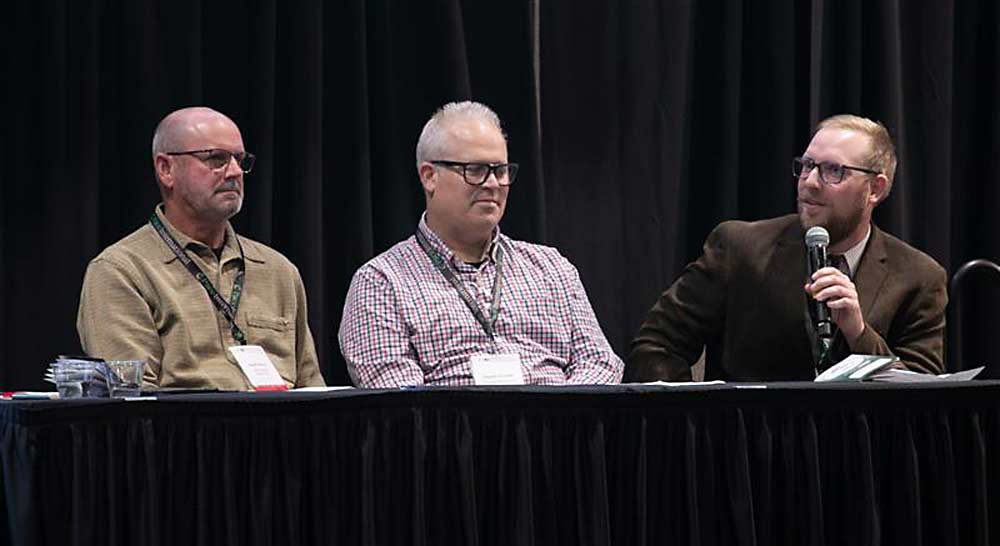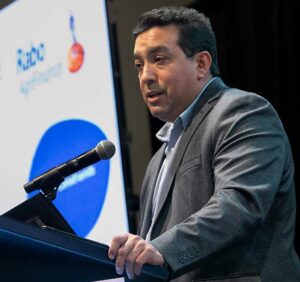
It’s a tough time to be a fruit grower.
The “Profitability” session at the Washington State Tree Fruit Association’s annual meeting in Kennewick on Monday afternoon underscored the challenges: falling fruit prices, soaring labor costs and rising interest rates.
Unless a new orchard will target 90 bins per acre and a $345 per bin return, it looks like a risky bet to lenders, said Erin Kniveton, a relationship manager with AgWest Farm Credit.
“The takeaway is that the investment risk is really high,” she said.
Only one grower had an answer when this question was put to a panel of growers: What would you plant to be profitable right now?
“I don’t know about perfect, but I can tell you what I am going to plant next year: V-trellis Honeycrisp in West Valley,” said Jacob Klaus, orchard manager for Gilbert Orchards. “It colors really well out there. You have to do what works for your site.”
Klaus and his fellow panelists, Shawn Tweedy of Chiawana Orchards and Keith Oliver of Olsen Bros., shared some strategies for cost-effective farming, including a high level of execution on crop load management and technology that makes workers more efficient, such as platforms and deleafers.
The biggest threat to profitability, they agreed, is rising labor costs. But according to Kniveton’s analysis, Washington growers’ labor costs will rise by 16 percent in 2024. That’s driven by the 7 percent increase in the Adverse Effect Wage Rate, to $19.25, and the overtime requirements which will kick in at 40 hours instead of 48.
Meanwhile, apple prices are falling as the industry tries to sell a 140-million-box crop after several years of smaller crops.
Jeff Baldwin of Sage Fruit spoke about the most profitable sizes to target for Washington’s top varieties.
“Our retailers want 64s, 72s, 80s and 88s. After that it gets discounted,” he said as he presented a chart of tray pack prices, by box size, averaged over the past five years. “Growers need to understand what the sweet spot is.”
Except that right now, “everything across this board has gone down,” he said. “We’ve seen about a $10 (per box) hit on Honeycrisp this year. I believe it’s the biggest Honeycrisp crop ever, and it’s a big concern.”
Baldwin said the industry is in a period of overproduction, and a 120- or 125-million-box crop would be a much better fit for the current demand.
For fruit businesses weathering this period of low prices and rising costs, Kniveton stressed the importance of working capital. She recommends having the cash equivalent of one-third of your operating costs, because lenders are typically willing to fund up to two-thirds of a farm’s expenses.
“What we are seeing is that producers with more working capital have more staying power to withstand low prices,” she said. For those that don’t have a strong balance sheet, she expects to see more asset sales or bids for outside equity.
“Sorry not to paint a rosier picture, but the current times are tough to navigate through,” she said. “Something you are going to have to get used to is these interest rates. We’re not going back to what they were.”
—by Kate Prengaman







Leave A Comment